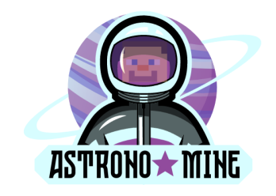The Aurora
Have you ever seen the aurora? A beautiful curtain of rippling light in the night sky, it is an awe-inspiring and unforgettable sight for those lucky enough to have witnessed it. But what causes the aurora?
It all starts with our closest star, the Sun. The Sun is incredibly energetic and is constantly making what we call the solar wind -- a stream of tiny particles. These fly out into space and are deflected by the magnetic field that surrounds planet Earth.
Normally that’s the end of the story… but sometimes there are huge eruptions on the Sun called solar flares that make the solar wind even stronger. When that happens the particles have so much energy that they don’t just fly into Earth’s magnetic field – they smash into it!
The solar wind particles then follow Earth’s magnetic field to our planet’s north and south poles. Eventually the particles crash into gases in our atmosphere. All that energy is then released as light! Solar wind particles colliding with oxygen produce a fabulous green colour. Nitrogen makes beautiful shades of blue and purple. This is what causes the aurora.
As beautiful as the aurora is, other side-effects of the solar wind can cause problems. The high-energy particles can damage satellites in orbit around our planet, and threaten the safety of astronauts. They can even cause power black-outs down on the surface of Earth. The aurora isn’t unique to Earth. Some other worlds in our Solar System, such as Saturn and Jupiter, have magnetic fields too. Solar wind particles can collide with them just as happens with Earth! Would you like to fly to another planet and see its aurora?
Cool fact: The aurora is named after the Roman goddess of dawn.
This article was posted in the European Space Agency for Kids on 30 May 2016.
Link: https://www.esa.int/kids/en/learn/Our_Universe/The_Sun/The_aurora
Link: https://www.esa.int/kids/en/learn/Our_Universe/The_Sun/The_aurora
